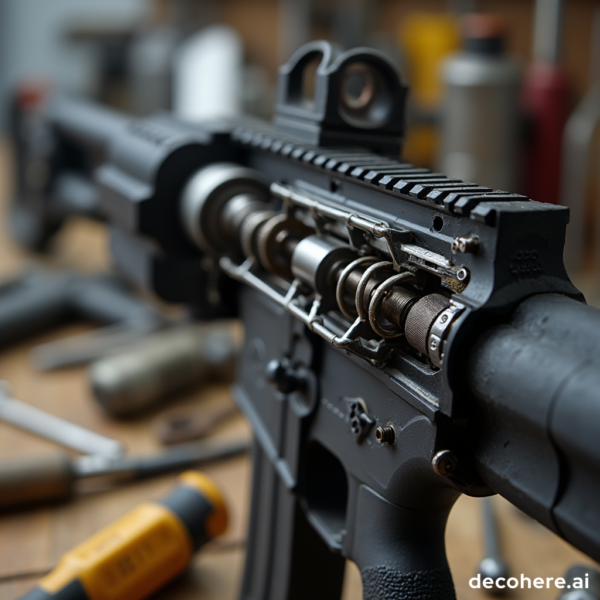Understanding the High Cost of Shutting Down an Automotive Assembly Line
Introduction
For automotive manufacturers, every second counts. The cost of shutting down an automotive assembly line is far greater than lost productivity alone. It can ripple through labor, supply chains, and local economies, amounting to staggering losses. Understanding these costs is essential for plant managers, executives, and anyone involved in the automotive sector. This article explores the financial realities of assembly line shutdowns, practical calculation methods, and actionable strategies to mitigate risk.
Direct Financial Cost of Shutdowns
The immediate cost of shutting down an automotive assembly line is often measured in thousands of dollars per minute. Industry data and surveys reveal that:

Source: community.aisler.net
- Average costs typically range from $1,000 to $22,000 per minute [1] [2] .
- Costs can reach as high as $50,000 per minute at some facilities, depending on production scale and product complexity [2] .
- On an hourly basis, this can total $1.3 million per hour or more for large operations [3] .
These figures include lost output, labor costs, and immediate operational expenses. For example, if a plant producing 60 vehicles per hour halts for just 30 minutes, it can lose 30 vehicles’ worth of revenue plus ongoing labor and overhead.
How to Calculate Your Specific Downtime Cost
The true cost of a shutdown depends on several factors unique to each facility. To estimate your risk, use the following step-by-step method:
- Calculate Planned vs. Actual Operating Time: Subtract actual operating time from planned operating time to get total downtime.
- Determine Average Production Rate: Divide total units produced by actual operating time.
- Estimate Units Lost: Multiply total downtime by average production rate.
- Calculate Lost Profit: Multiply lost units by gross profit per unit for a true downtime cost.
For labor and overhead, multiply the number of impacted employees by their hourly wage and the percentage of productivity lost during the stoppage [4] . For example, if 100 workers earning $40/hour are idled at 70% lost productivity for 2 hours, the direct labor loss is $5,600.
Hidden and Indirect Costs
While direct costs are substantial, indirect costs can be even more damaging:
- Supply Chain Disruption: Suppliers may halt shipments, incur storage fees, or face losses if their products can’t be processed.
- Downstream Impact: Delays can disrupt dealer deliveries, affect customer loyalty, and trigger penalties for missed contracts.
- Local Economic Effects: Shutdowns can affect thousands of jobs in the region, particularly in communities where the plant is a major employer [5] .
- Lost Innovation Time: Time spent recovering from downtime reduces opportunities for process improvement and innovation [4] .
For example, one study notes that a major plant shutdown could temporarily affect up to half a million jobs across the United States, including suppliers and local businesses reliant on plant workers [5] .
Case Studies and Real-World Examples
Consider a midsize automotive plant producing 50 vehicles per hour, each with a gross profit of $2,500. A one-hour shutdown means:
- 50 vehicles x $2,500 = $125,000 in lost gross profit
- Plus labor, supply chain, and restart costs
At larger facilities, costs escalate. In 2015, a survey found some plants estimated average downtime costs at $22,000 per minute, with a reported high of $50,000 per minute [2] .
Causes of Assembly Line Shutdowns
Common causes include equipment failure, supply chain interruptions, labor shortages, and unexpected external events (natural disasters, regulatory shutdowns). Preventive maintenance and robust supply chain management are critical to minimizing these risks.
Manufacturers increasingly rely on advanced monitoring systems and predictive analytics to detect potential breakdowns before they occur. However, the skilled labor shortage remains a significant challenge, driving some companies to outsource maintenance and recruitment [2] .
Actionable Steps to Minimize Shutdown Costs
To reduce risk and control costs, consider the following:
- Implement Preventive Maintenance: Schedule regular inspections and repairs to avoid unplanned breakdowns.
- Invest in Training: Ensure staff are equipped to quickly resolve common issues and safely restart production.
- Diversify Suppliers: Maintain relationships with multiple suppliers to avoid disruptions from a single source.
- Utilize Technology: Adopt real-time monitoring and predictive maintenance tools to identify problems early.
- Develop Contingency Plans: Prepare for potential shutdown scenarios with clear protocols for communication, restart, and recovery.
If you are seeking professional guidance, consider contacting industry associations such as the National Association of Manufacturers or searching for automotive consulting firms with expertise in operational risk management. When searching online, use terms like “automotive assembly line downtime solutions” or “manufacturing plant risk management consultants” for relevant service providers.
Alternative Approaches and Solutions
Some manufacturers reduce risk by outsourcing maintenance tasks or by partnering with technology providers specializing in predictive analytics. Others invest in cross-training employees to handle multiple roles, further reducing vulnerability to labor shortages.
Another approach is to build redundancy into the production process, such as parallel production lines or modular manufacturing cells that can continue operating if part of the line goes down. While this may require significant upfront investment, it can pay off in reduced downtime and greater flexibility over time.

Source: assemco.com.au
Challenges and Solutions
Major challenges include:
- Skilled Labor Shortage: Many manufacturers struggle to recruit and retain experienced technicians. Consider partnering with technical colleges or workforce development programs to build a pipeline of skilled workers.
- Cost Containment: Balancing preventive investment with day-to-day operational costs can be difficult. Use data-driven decision-making to prioritize the most impactful upgrades.
- Supply Chain Complexity: Global supply chains introduce risk from distant suppliers. Develop strong relationships and transparent communication channels to respond quickly to disruptions.
For additional support, you can reach out to your local manufacturing extension partnership (MEP) or regional business development agency for resources on training, technology adoption, and risk assessment.
Key Takeaways
Shutting down an automotive assembly line is an expensive event, often costing manufacturers tens of thousands of dollars per minute. The true cost includes not just lost output, but also labor, supply chain, and economic impacts. By proactively managing equipment, investing in workforce development, and leveraging technology, manufacturers can substantially reduce the likelihood and impact of costly shutdowns.
How to Access Support and Learn More
If you need expert advice or assistance to minimize your risk of downtime, you can:
- Consult with your industry peers through professional associations.
- Contact specialized risk management consultants by searching for “automotive assembly line risk consultants.”
- Reach out to local economic development agencies or your state’s manufacturing extension partnership for guidance and training opportunities.
To stay current on best practices and new technologies, regularly review industry publications, attend manufacturing conferences, and participate in online forums dedicated to automotive production and operations excellence.
References
- [1] University of Phoenix (2024). Automotive Assembly Line Shutdown Costs.
- [2] Manufacturing.net (2015). The $22000-Per-Minute Manufacturing Problem.
- [3] TPC Training (2021). The Cost of Factory Downtime.
- [4] Oden Technologies (2020). Downtime in Manufacturing: What’s the True Cost?
- [5] Urban Institute (2025). Car Manufacturing Plant Shutdowns Could Cost Half a Million US Jobs.



